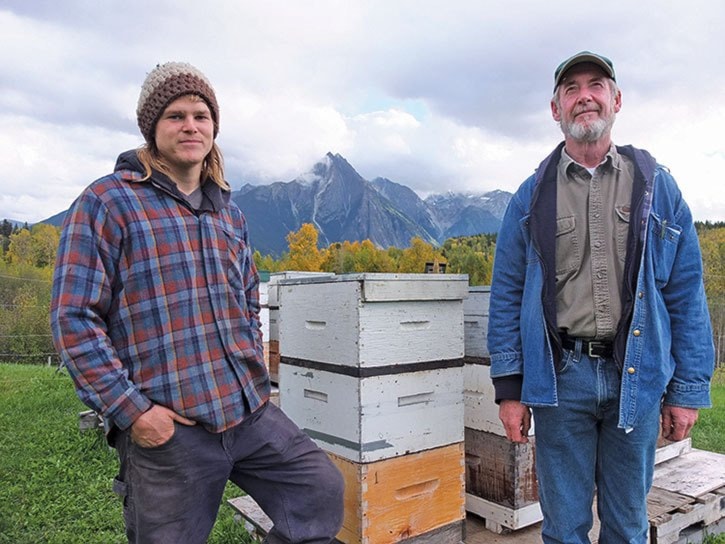A community beekeeping project aimed at creating a honey industry in the Hazeltons could bring $2 million annually into the local economy if it takes flight.
Earlier this year the Bee World Project (BWP), an international organization which runs beekeeping projects to create economic opportunities in small communities, spent $15,000 launching a pilot program in the Hazeltons.
Millions of bees were trucked from Vancouver to the Upper Skeena Development Centre’s (USDC) Senden Farm, where 12 participants have been tending four hives each throughout the summer.
If the project’s first season is deemed successful when it ends on Oct. 31, the BWP will commit to teaching an additional 30 people as the second phase of a three-year plan.
BWP believes the Hazeltons could support 100 beekeepers with a total 4,000 hives, which it estimates would bring more than $2 million into the communities.
USDC executive director Alice Smith said the goal of the project was to help local people build a livelihood around beekeeping.
If the project continues in 2015, there will be an emphasis on recruiting female and First Nations participants.
“We didn’t have a lot of connection to First Nations initially but if the pilot continues next year, which would be an expansion of the existing project, then certainly we would have more time over the winter to approach First Nations to see if they would be interested,” she said.
Honey produced in the Hazeltons would be “fireweed” honey, a variety known for its buttery flavour and texture, which Smith said was popular with Chinese markets.
Since the first BWP started in Cambodia in 2009, more projects have been launched in locations including Ethiopa, Zambia, Uganda and Peru.
Co-founder John Gibeau, who is based at the Honeybee Centre in Surrey, said the results from the pilot program so far had been positive.
“It looks like there is interest and it looks like there is fireweed honey, which is the highest value honey in the area, that’s produced in that area so the potential there is fantastic,” said Gibeau.
“[$2 million] annually is totally feasible, probably more than that.”
He said the income would come exclusively from honey sales, first in the area between Prince George and Terrace, and then in Vancouver and international markets.
“There’s an insatiable appetite in the world for it,” said Gibeau.
“The Japanese would pay anything for it.”
Rudi Peters, who runs Skeena Valley Apiary in Terrace, led a three-day beekeeping course with the participants before the bees arrived in June.
He said he regularly runs out of honey and struggles to meet demand for it in Terrace. He believes the market would be equally big in the Hazeltons.
“Way more [demand] than they could ever hope to produce,” he said.
“Overall I think the project is a very good idea.”
Hazeltons resident Chris Timms said his interest in beekeeping comes from a desire to be more self-sufficient.
“Another thing is about the importance of pollinators and the integral part that bees play in the ecosystems around here and we need to be supporting those things,” he said.
“Right now with conventional agricultural practices we’re actually doing the opposite of supporting those things so we need to fill in voids that are being made from our civilized world.”
The bees will be prepared for winter by providing them with extra food before “wrapping” them to keep them warm.
They are currently protected from bears with an electric fence.
